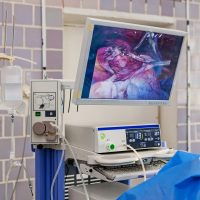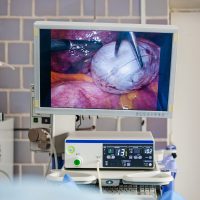In the area of “video surgery”, modern information technology brought revolutionary improvements in the last decade. The organization, aftercare, inspection and storing of those videos, made at a “video surgery” are problematic. One of the main problems is the duration of the videos, which can be up to a few hours and be filled with irrelevant frames. The fundamental ideas behind our research are:
-
to develop a multimedia information system with which you can automatically process/index surgery videos, add them to a video archive, and perform effective content-based search on it.
-
provide visual operation summaries that can quickly express the relevant content/phases.
-
reduce the amount of needed storage through content-specific compression.
-
make the videos easier to share with other doctors.
-
semi-automatically detect adverse events in medical videos for the purpose of surgical quality assessment (SQA).
Currently our research teams of “Endoscopic Video Processing” (ENDOVIP), and “Knowledge & Information Sharing in Medical Expert Teams” (KISMET), and “Surgical Quality Assessment in Gynecologic Laparoscopy” (SQUASH) aim at developing novel methods of multimedia retrieval, video processing, content-based indexing and coding of medical videos. These methods will be used to optimize long term storage without losing data, as well as fast browsing the videos for the significant parts of the surgery.
Our research group has active cooperations with national and international hospitals (KABEG Landeskrankenhaus Villach, KABEG Klinikum Klagenfurt, Vienna General Hospital (AKH) / Medical University of Vienna, Catharina Hospital Eindhoven) as well as with the leading endoscope manufacturer KARL STORZ.
Important steps were made in :
- “Domain-Specific Video Compression“
- “Endometriosis Annotation“
- “Image to Video Linking“
- “Instrument and Phase Detection in Cholecystectomy“
- “Keyframe Detection“
- “Recognizing Surgical Actions and Anatomical Structures for Gynecological Surgeries with deep learning“
- “Smoke Detection“
- “Surgical Quality Assessment“

